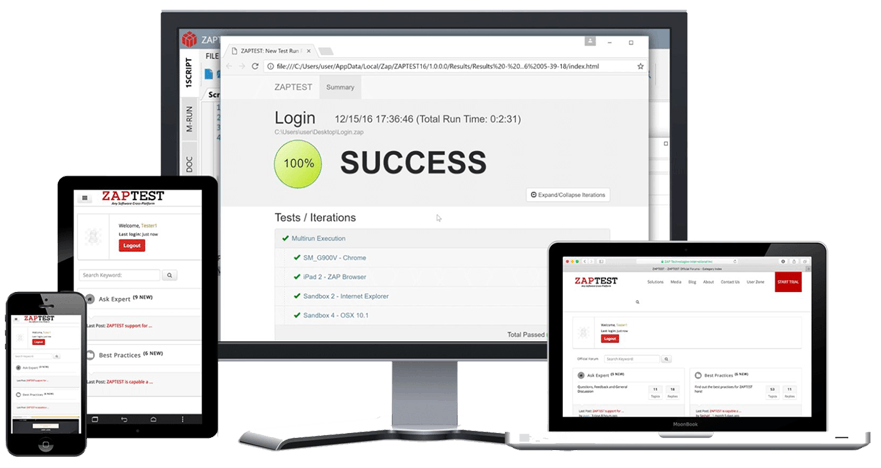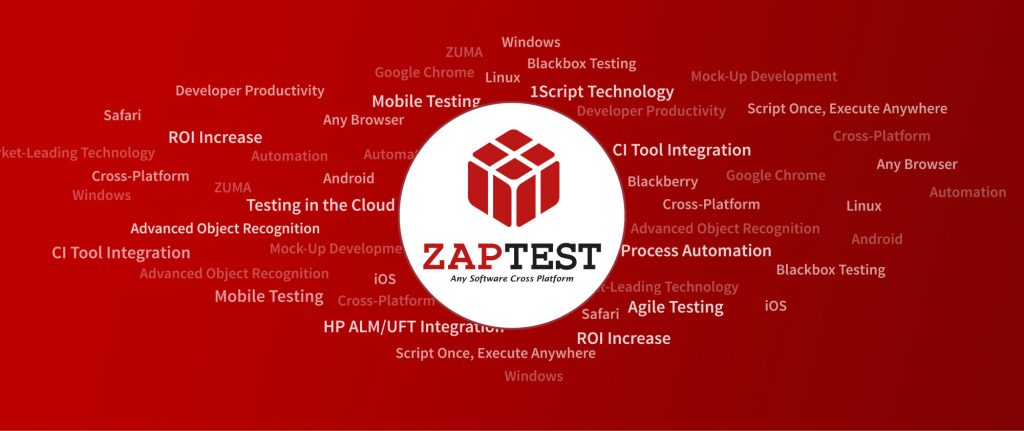Equivalence partitioning in software testing is a black-box testing technique that helps you build efficient test cases without compromising on test coverage.
In this article, we’ll look at what equivalence class partitioning is, why it’s useful, and explore some of the processes and approaches you can use to unlock the benefits of this technique.
What is equivalence class partitioning
in software testing?

All software has particular input conditions. In the context of software testing, these input conditions describe the values or data that a tester must use to verify the quality and functionality of their software. These inputs can be something as simple as a mouse click, all the way up to text and numbers.
An equivalent partition in software testing explores the different inputs required for using the software and groups them into equivalence classes, i.e., sets of inputs that will have an equivalent effect on the software’s behavior.
If you know how each group of inputs will behave, then you don’t need to test each representative of the group. As such, equivalence class partitioning is a great way to help testers reduce the frequency of redundant tests. In a hyper-competitive software development world with increasingly tight deadlines, saving time and effort in the software testing life cycle (STLC) is crucial.
Finally, it’s worth noting that equivalence testing is a black-box testing technique. In short, it means that the testers do not need to know about the program’s internal code or inner workings. Tests are based on inputs, outputs, and external behaviors. As such, these tests are highly focused on user behavior while using the program.
1. Software testing equivalence partitioning in a nutshell
Equivalence partitioning divides software testing input data into two camps: valid and invalid inputs. The values within each partition must cause the software to exhibit the same behavior. For example:
- If the condition of one value in Partition A is true, so must the other values in Partition A.
- Likewise, if the conditions of one value in Partition A are false, the other values in Partition A must also be false.
In a testing context, each partition must be covered at least once. Logically, this means that if one entry in Partition A fails, then all other inputs will fail too. This process should save time because instead of testing each input that sits in Partition A, testers can test just one and extrapolate the outcome based on its commonalities.
2. Why equivalence class testing in software testing is important
Before we get into the direct benefits of equivalence class testing in software testing, we must define why the approach is important.
All testers understand that software testing requires compromises. Time and budgets are limited, which means testers need to make the most of their resources. Software testing equivalence partitioning helps teams find a balance between efficiency and reliability in their testing by reducing the number of inputs.
Benefits of equivalence partitioning
in software testing
An equivalent partition in software testing is favored by testing teams for a variety of reasons. Here are some of the most compelling.
1. Efficiency
The big advantage of equivalence partition testing lies in its efficiency. When testers use equivalence partitioning, they can reduce the number of test cases they require without compromising on test coverage. By selecting an input case from each equivalence class, testers can feel confident that they understand how their software works with a variety of inputs.
2. Simplicity
Another big advantage of software testing equivalence partitioning is simplicity. Breaking down a diverse set of inputs in both valid and invalid data means test planning is far simpler. Testing each input individually requires a lot of documentation and coordination. Cutting that down to one representative example streamlines the test process.
Enhanced coverage
Using equivalence classes in testing also allows you to use your testing time more efficiently. Reducing test inputs into classes means that you can more thoroughly test each class. This comprehensive approach would be frankly impossible if you tested each input individually. Equivalence partitioning allows teams to get thorough and test valid and invalid data, edge cases, boundary values, and more.
3. Reusability
The initial time that you invest in establishing each equivalence class in software testing pays off down the road if you reuse these classes for future input tests. While not all partitions will be relevant for future tests, the ones that are will save you a lot of time with either future projects or even regression testing situations.
Drawbacks of equivalence partitioning
in software testing
While equivalence partitioning offers some major benefits, it’s not the ideal solution for every scenario. Let’s explore some of its limitations.
1. Input order
In certain situations, input order is a critical part of testing the functionality of an application. That’s not something that you can really cut down by using equivalence partitioning. Testers must stay mindful of these situations and use alternative techniques to provide good coverage.
2. Complex input dependencies
Complex software with complex input dependencies is another area where the limitations of equivalence partitioning are exposed. For example, software that outputs calculations based on various inputs. In this scenario, testers would need to use a variety of techniques to reduce combinatorial explosion and increase the likelihood of isolating defects.
Alternative approaches to complement the
limitations of equivalence testing
While equivalence partition testing is appropriate for many test scenarios, highly complex software with intricate dependencies among input values can require additional complementary approaches.
When it comes to writing test cases for complex software, using a combination of these approaches is a solid idea.
1. Pairwise testing
Pairwise testing is a software testing technique that tests all possible combinations of each pair of input parameters. This approach ensures that each pair of parameters is tested together at least once.
2. Decision table testing
A decision table helps testers methodically map out different input combinations. It’s a good way to ensure systematic coverage when complex dependencies exist.
3. State transition testing
This testing type measures how the software transitions between different states in response to various input combinations.
4. Model-based testing
This approach requires making a model based on the software’s internal logic and using an automation tool to create test cases based on that model. This technique is adept at handling complexity and ensuring adequate coverage.
Equivalence class partitioning testing examples
The best way to understand equivalence partitioning is to look at how and where you might use an equivalence class in software testing. Here are a few examples to help you further visualize the concept.
1. Equivalence class partitioning testing example #1
An online order form is a good equivalence class example in software testing.
Let’s say you are building an app for an online stationary equipment retailer. There is a typical order form for bails of A4 paper. Here is how you can use equivalence classes to test this form.
Equivalence classes:
Quantities of A4 paper are within a specific range of, for example, 1 to 100. So, the three classes are:
- 1 to 100
- Numbers below 1
- Numbers above 100.
Test cases:
Three test cases should be run, with the following expected outcomes
- Any number between 1 and 100 = Order processed
- Numbers below 1 = error message
- Numbers over 100 = error message
2. Equivalence partitioning testing example #2
An equivalence class in software testing can deal with more than just numbers. In this example, we’ll explore how you can use the same principle to verify a file upload portal. Let’s say you need to test for a site that requires users to upload identity documents, but you can only accept specific formats.
Equivalence classes:
- Supported documents are PDF and JPEG.
- Unsupported documents are all other document formats
- No document
Test cases:
- Test by uploading PDF or JPEG = successful upload
- Test by uploading unsupported format = error message
- Test with no file upload = error message
How to implement an equivalence partitioning
software testing approach
If you want to use equivalence classes in testing, you need to take a strategic approach. Here is a useful step-by-step guide to implementing equivalence partitioning in software testing.
Step #1: Identify input variables
Each software responds to a variety of input variables. For complex software, these variables can be huge. So, go through the software requirements and specifications and pinpoint all the variables that have an impact on the software’s behavior.
Some of the most obvious inputs will include user input forms. However, you need to consider a wider range of inputs for your list. You can also consider environmental variables, API calls, internal calculations, and so forth.
Next up, you should understand the different types of variable data. You can categorize these variables as integer, Boolean, string, etc., to define the appropriate partitions.
Finally, you need to explore input constraints. That will be things like what characters are allowed, defined formats, and minimum/maximum values.
Step #2. Determine valid and invalid partitions
Look at each input variable and begin to partition them according to valid and invalid outcomes. These will be your equivalence classes in testing.
1. Valid partitions
Valid partitions can be split into two classes.
Positive equivalence classes:
Values that you expect your software will handle successfully. For example, for software that records percentage grades, anything between 0 and 100 is valid.
Negative equivalence classes:
This category will be for values that are outside the boundaries of expected input but that your software should handle with an error message. For example, the input is 110 for a percentage grade, which prompts the software to return an error message saying, “All values must be 0 to 100”.
2. Invalid partitions
These equivalence classes will include inputs that will trigger errors or unexpected behaviors. In our example above, that could include attempts to input A+ or B or similar inputs into the percentage grade. While these inputs could be technically correct, they are outside the numeric expectations.
#3. Writing effective test cases
Next up, you need to design test cases that cover each equivalence partition at least once. As mentioned earlier in the article, this ensures appropriate test coverage.
First up, you must select representative values within each equivalence partition that can cover both valid and invalid data.
Tips for writing solid test cases
- Think about boundary values: Ensure that you test the boundaries of your partitions. Minimum, maximum, inclusive, exclusive, etc., as these areas are strong candidates for bugs. For example, if your input expectations are between 0 and 100, test for negative values, as well as numbers like 101.
- Consider positive and negative test scenarios for both your valid and invalid test cases.
- Combination testing is a good idea. Use a few different approaches as outlined in our alternative approaches to complement the limitations of the equivalence testing section above.
- Document the rationale behind why input values have been divided into specific partitions, and clearly outline the expected behavior of each test
- Where possible, use visual tools to bring a sense of clarity and objectivity to your test cases by using diagrams or tables to map out your partitions.
#4. Schedule and execute your test cases
Prioritize your tasks based on factors like:
- Which areas are most likely to have defects
- Which scenarios are most likely to cause severe scenarios, such as crashes or freezes
Then, execute your tests and record the outputs and any errors that occur. For complex programs with lots of inputs, you can use RPA tools to mimic user actions.
#5. Analyze the results
Pool the collected test data and analyze the results. Some methods you need to use are to:
- Look at each test case and compare the actual outputs with your expected outputs
- Find any discrepancies and investigate and report any bugs and defects.
#6 Additional tips
While these tips won’t apply in every scenario, they will prove useful for complex software testing.
- Decision tables are an excellent way to visualize your equivalence partitions and different input combinations you might want to use
- You can merge equivalence classes if they exhibit almost identical behavior, further optimizing the testing process
- Use boundary value testing to improve defect detection
- Where possible, automate your equivalence partitioning test cases
Equivalence partitioning and boundary value analysis
Equivalence partitioning is predicated on the assumption that each test within a partition will produce the same result. While that is true in many situations, it won’t always work. For example, any inputs that have been added to a partition by mistake may go unchecked, leading to reduced coverage and potential software instability down the line.
The solution to this issue is boundary value testing. It allows software testing teams to focus on the areas that are most likely to contain risks and tests the software on that basis. In short, it proposes that risks are most likely to occur at the edges or boundaries of your input partitions. Therefore, testers can write test cases at the upper and lower bounds of the inputs, in addition to the other equivalence class test cases.
Equivalence partitioning and automation with ZAPTEST
Software test automation tools, like ZAPTEST, can help teams automate equivalence partitioning both during test creation and execution.
Let’s explore how ZAPTEST can help you unlock the benefits of this useful black-box testing approach.
1. Tool selection
Selecting the right tool for the job is important. Most test automation tools specialize in either web, mobile, or desktop testing. ZAPTEST is capable of handling testing across different platforms and applications, making it a solid choice.
2. Write and execute test cases
ZAPTEST 1Script lets you scan the user interface to build test automation. Additionally, you can also scan application mock-ups if you are in an early stage of development. Using the Scan GUI feature, ZAPTEST will scan all test objects and add them to the objects list.
From here, you can add objects to the diagram and build out the test steps.
ZAPTEST lets you automate the writing of the cases with a simple drag-and-drop interface. You don’t need coding expertise to build test cases with ZAPTEST. So, from here, you can select the relevant operation from a drop-down method and build a test case based on the input values needed for your interface. Then, you can build test cases for each equivalence and execute your test cases. You can even reuse test cases and edit them in the Step editor, saving lots of time.
3. Reporting and test case management
ZAPTEST allows you to run test cases in parallel, saving considerable time. This can help you run a large number of different equivalence partitions at once or run particular groups of tests.
Results are easy to gather thanks to detailed failed/passed reports, screenshots, execution logs, and performance metrics related to each test case.
4. Test case maintenance
You can also simply track and maintain your test cases thanks to quality version control capabilities. What’s more, ZAPTEST users can clone and reuse tests to achieve a new level of efficiency.
ZAPTEST offers much more functionality aside from test case automation. With a suite of RPA tools, ZAPTEST offers 2-in-1 functionality, bridging the gap between DevOps and BizOps in a future marked by hyperautomation, where everything that can be automated will be automated.
Final thoughts
Equivalence partitioning is an elegant solution for situations where testers must strike a balance between efficiency and accuracy. With some software allowing an almost endless range of inputs, equivalence class partitioning helps teams break down testing data into manageable, bite-sized chunks that can each be tested thoroughly.









